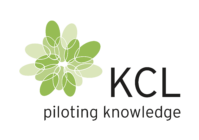Understanding the Basics of Paper Durability
Paper durability is a critical factor in ensuring that documents, books, and other paper products withstand the test of time. The durability of paper is influenced by its composition, the manufacturing process, and the conditions under which it is stored and used. Understanding these basics is the first step towards enhancing paper strength and longevity.
Paper is primarily made from cellulose fibres, which are derived from wood, cotton, or other plant materials. The quality and type of these fibres play a significant role in determining the paper’s durability. Longer fibres generally result in stronger paper, while shorter fibres can lead to weaker, more brittle paper.
In addition to fibre length, the presence of additives and fillers can also impact paper durability. Additives such as sizing agents can improve water resistance, while fillers like clay can affect the paper’s texture and strength. By carefully selecting and balancing these components, manufacturers can produce paper with enhanced durability.
Chemical Treatments for Paper Strength Enhancement
Chemical treatments are a common method for enhancing paper strength. One of the most widely used treatments is the application of sizing agents, which help to improve the paper’s resistance to water and other liquids. This is particularly important for documents that need to be preserved for long periods.
Another effective chemical treatment is the use of cross-linking agents. These chemicals create bonds between the cellulose fibres, increasing the paper’s tensile strength and resistance to tearing. Cross-linking agents can be applied during the manufacturing process or as a post-treatment.
Additionally, the incorporation of nanocellulose, such as microfibrillated cellulose (MFC), can significantly enhance paper strength. At KCL, we have extensive experience in nanocellulose materials. Our MFC, derived from industrial agro sidestreams like sugar beet pulp, is designed to fulfil various application requirements. This material can increase the strength and stiffness of paper products, creating substantial savings in material usage during production.
Mechanical Methods to Improve Paper Longevity
Mechanical methods are also essential for improving paper longevity. One of the primary techniques is refining, which involves mechanically treating the cellulose fibres to increase their bonding potential. Refining can enhance the paper’s strength and durability by creating a more uniform and tightly bonded fibre network.
Another mechanical method is calendering, a process that involves passing the paper through rollers to smooth and compress it. This can improve the paper’s surface properties and increase its resistance to wear and tear. However, excessive calendering can lead to a loss of bulk and stiffness, so it must be carefully controlled.
Additionally, the use of reinforcement materials, such as synthetic fibres or natural fibres like hemp, can further enhance paper durability. These materials can be incorporated into the paper during the manufacturing process to provide additional strength and resistance to damage.
Environmental Factors Influencing Paper Durability
Environmental factors play a crucial role in the durability of paper. Exposure to light, humidity, and temperature fluctuations can all impact the paper’s longevity. For instance, prolonged exposure to ultraviolet (UV) light can cause paper to yellow and become brittle over time.
Humidity is another critical factor. High humidity levels can lead to the growth of mould and mildew, which can damage the paper. Conversely, low humidity can cause the paper to become dry and brittle. Maintaining a stable and moderate humidity level is essential for preserving paper durability.
Temperature fluctuations can also affect paper durability. Extreme temperatures can cause the paper to expand and contract, leading to warping and other forms of damage. Storing paper in a controlled environment with stable temperature and humidity levels is crucial for long-term preservation.
Innovative Techniques and Modern Solutions
Innovative techniques and modern solutions are continually being developed to enhance paper durability. One such technique is the use of nanotechnology, which involves incorporating nanoparticles into the paper to improve its strength and resistance to damage. Nanocellulose, such as KCL’s MFC, is a prime example of this approach.
Another modern solution is the development of bio-based coatings and barriers. These materials can provide additional protection to the paper, making it more resistant to water, grease, and other contaminants. At KCL, our MFC can be used as a natural binder in coating formulations, replacing synthetic latexes and other barrier materials.
Digital preservation techniques are also becoming increasingly important. By digitising important documents and storing them electronically, the physical paper can be preserved in a controlled environment, reducing the risk of damage from environmental factors.
Common Mistakes and How to Avoid Them
When it comes to enhancing paper durability, there are several common mistakes that should be avoided. One of the most frequent errors is over-treating the paper with chemicals. While chemical treatments can improve durability, excessive use can lead to unwanted side effects, such as increased brittleness or reduced flexibility.
Another common mistake is neglecting environmental factors. Even the most durable paper can be damaged if it is not stored and handled properly. Ensuring that paper is kept in a stable environment with controlled temperature and humidity levels is essential for long-term preservation.
Finally, failing to consider the paper’s intended use can lead to durability issues. Different applications require different levels of durability, and selecting the appropriate materials and treatments for the specific use case is crucial. By understanding the paper’s requirements and carefully selecting the right techniques, manufacturers can produce long-lasting paper products that meet the needs of their customers.
